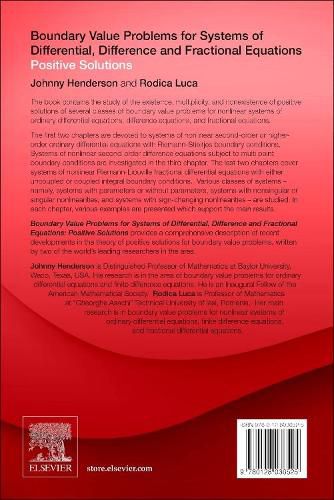Readings Newsletter
Become a Readings Member to make your shopping experience even easier.
Sign in or sign up for free!
You’re not far away from qualifying for FREE standard shipping within Australia
You’ve qualified for FREE standard shipping within Australia
The cart is loading…






Boundary Value Problems for Systems of Differential, Difference and Fractional Equations: Positive Solutions discusses the concept of a differential equation that brings together a set of additional constraints called the boundary conditions.
As boundary value problems arise in several branches of math given the fact that any physical differential equation will have them, this book will provide a timely presentation on the topic. Problems involving the wave equation, such as the determination of normal modes, are often stated as boundary value problems.
To be useful in applications, a boundary value problem should be well posed. This means that given the input to the problem there exists a unique solution, which depends continuously on the input. Much theoretical work in the field of partial differential equations is devoted to proving that boundary value problems arising from scientific and engineering applications are in fact well-posed.
$9.00 standard shipping within Australia
FREE standard shipping within Australia for orders over $100.00
Express & International shipping calculated at checkout
Stock availability can be subject to change without notice. We recommend calling the shop or contacting our online team to check availability of low stock items. Please see our Shopping Online page for more details.
Boundary Value Problems for Systems of Differential, Difference and Fractional Equations: Positive Solutions discusses the concept of a differential equation that brings together a set of additional constraints called the boundary conditions.
As boundary value problems arise in several branches of math given the fact that any physical differential equation will have them, this book will provide a timely presentation on the topic. Problems involving the wave equation, such as the determination of normal modes, are often stated as boundary value problems.
To be useful in applications, a boundary value problem should be well posed. This means that given the input to the problem there exists a unique solution, which depends continuously on the input. Much theoretical work in the field of partial differential equations is devoted to proving that boundary value problems arising from scientific and engineering applications are in fact well-posed.